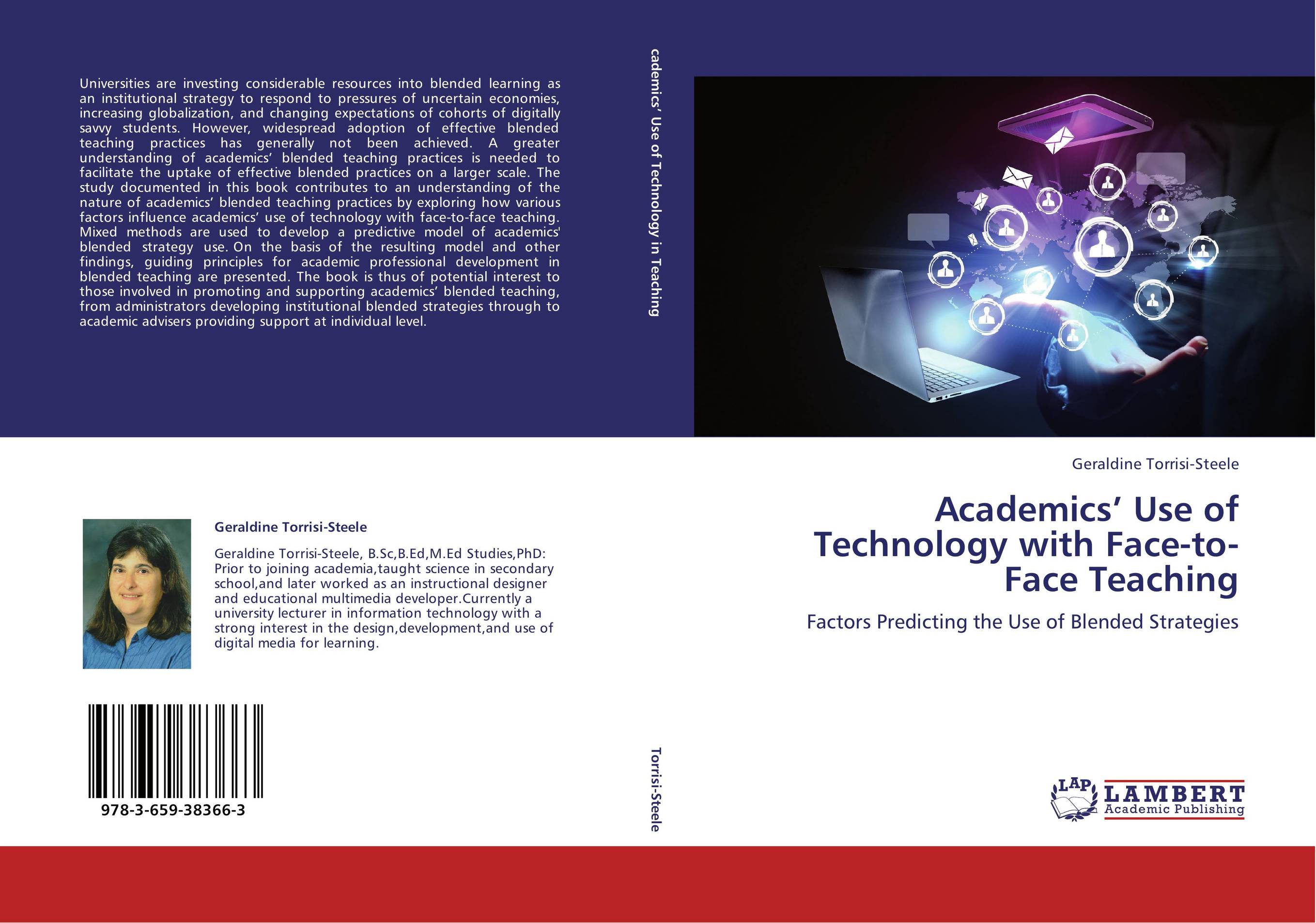| Поиск по каталогу |
|
(строгое соответствие)
|
- Профессиональная
- Научно-популярная
- Художественная
- Публицистика
- Детская
- Искусство
- Хобби, семья, дом
- Спорт
- Путеводители
- Блокноты, тетради, открытки
Academics’ Use of Technology with Face-to-Face Teaching. Factors Predicting the Use of Blended Strategies

В наличии
| Местонахождение: Алматы | Состояние экземпляра: новый |

Бумажная
версия
версия
Автор: Geraldine Torrisi-Steele
ISBN: 9783659383663
Год издания: 2013
Формат книги: 60×90/16 (145×215 мм)
Количество страниц: 300
Издательство: LAP LAMBERT Academic Publishing
Цена: 44075 тг
Положить в корзину
| Способы доставки в город Алматы * комплектация (срок до отгрузки) не более 2 рабочих дней |
| Самовывоз из города Алматы (пункты самовывоза партнёра CDEK) |
| Курьерская доставка CDEK из города Москва |
| Доставка Почтой России из города Москва |
Аннотация: Universities are investing considerable resources into blended learning as an institutional strategy to respond to pressures of uncertain economies, increasing globalization, and changing expectations of cohorts of digitally savvy students. However, widespread adoption of effective blended teaching practices has generally not been achieved. A greater understanding of academics’ blended teaching practices is needed to facilitate the uptake of effective blended practices on a larger scale. The study documented in this book contributes to an understanding of the nature of academics’ blended teaching practices by exploring how various factors influence academics’ use of technology with face-to-face teaching. Mixed methods are used to develop a predictive model of academics' blended strategy use. On the basis of the resulting model and other findings, guiding principles for academic professional development in blended teaching are presented. The book is thus of potential interest to those involved in promoting and supporting academics’ blended teaching, from administrators developing institutional blended strategies through to academic advisers providing support at individual level.
Ключевые слова: Higher Education, faculty development, Blended Learning, professional development, teaching and learning, Teaching Technology, academic development, university teaching, Technology Acceptance, technology use, teaching in higher education, Learning Technology, technology adoption, blended teaching, academic technology use, faculty technology use, blended teaching predictive model, predictive model, teaching experience higher education, higher education teaching, technology higher education, e-learning, Online Teaching



